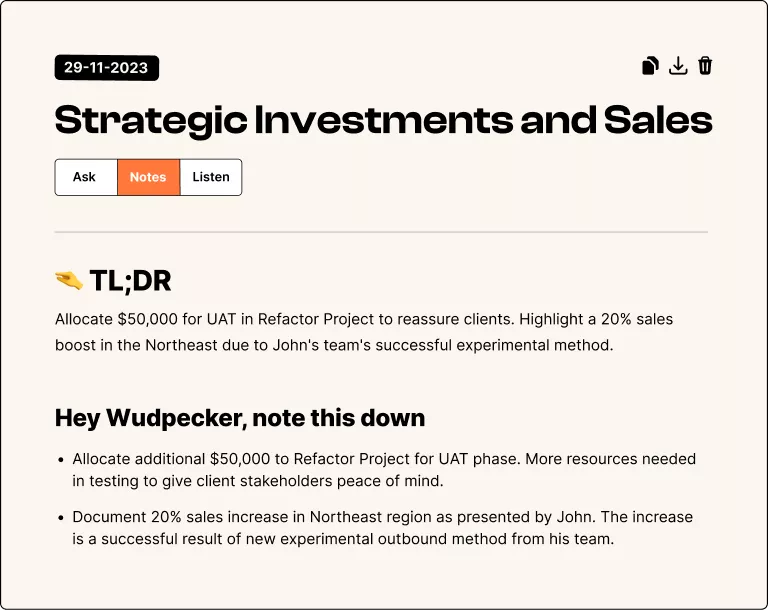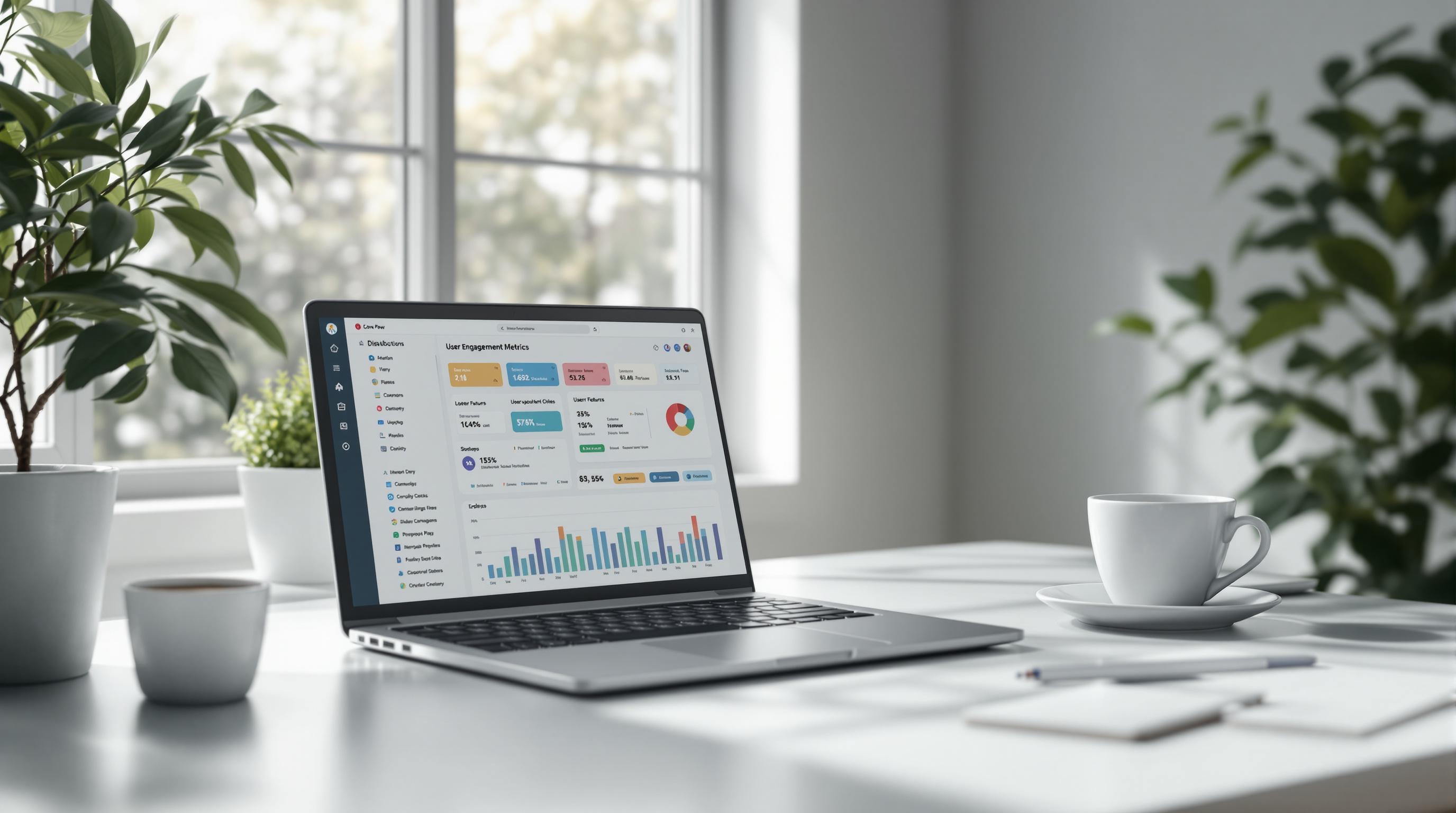Want to grow your B2B SaaS business? Start by tracking the right metrics at every stage of the customer lifecycle.
Here’s a quick breakdown of the six key stages and the metrics that matter:
- Awareness: Measure website performance (e.g., conversion rates, demo requests).
- Consideration: Track sales pipeline data like lead qualification rates and deal sizes.
- Purchase: Focus on customer acquisition cost (CAC) and payback periods.
- Adoption: Monitor onboarding success (e.g., time-to-value, feature usage).
- Retention: Use customer health scores and active user trends to reduce churn.
- Expansion: Track upsells, cross-sells, and Net Revenue Retention (NRR).
Why it matters: By mapping lifecycle stages, you can spot risks early, improve customer experience, and identify revenue opportunities. Tools like product analytics platforms help you collect and act on these insights effectively.
Want more detail? Keep reading for actionable metrics and strategies to optimize each stage.
Metrics for Early Stage Customer Journey
Customer Acquisition Metrics
Acquisition metrics help identify which channels bring in leads that are most likely to convert. These insights can guide you in refining your funnel:
-
Website Performance Metrics
Measure how visitors interact with your site:- Conversion rate from unique visitors to leads
- Average time spent on key product pages
- Completion rates for demo requests
- Conversion rates for free trial signups
-
Sales Pipeline Data
Understand how leads progress through the sales process:- Rate of lead qualification
- Duration of the sales cycle
- Distribution of deal sizes
- Win rates by lead source
-
Cost Metrics
Evaluate the efficiency of your spending:- Customer Acquisition Cost (CAC)
- CAC payback period
- Marketing spend per qualified lead
- Efficiency in allocating sales resources
Onboarding Performance Metrics
Once leads become customers, a smooth onboarding process ensures they quickly find value in your product. These metrics can help you identify and address any challenges:
-
Time-to-Value Indicators
Track how fast new users start seeing benefits:- Days until they use a key feature for the first time
- Rate of core feature adoption
- Time taken to complete the initial setup
- Percentage of users who become active
-
User Engagement Metrics
Monitor how engaged your users are:- Daily or weekly active users (DAU/WAU)
- Rate of discovering new features
- Trends in session durations
- Levels of team collaboration within the product
Userlens simplifies tracking these metrics, providing insights into user behavior and potential barriers to adoption. By combining these data points with customer feedback, teams can:
- Pinpoint early engagement patterns
- Identify implementation challenges
- Monitor feature adoption progress
- Recognize effective onboarding strategies
Usage and Retention Metrics
Product Usage Data
Understanding how users interact with your product is key to measuring engagement. Usage metrics highlight patterns that show both successful adoption and areas of concern.
-
Activity Frequency Metrics
Measure how often users engage with your product:- Daily Active Users (DAU)
- Weekly Active Users (WAU)
- Monthly Active Users (MAU)
- Average sessions per user
- Time spent per session
-
Feature Adoption Tracking
Track which features users rely on most. By focusing on the usage rates of core features, you can identify what resonates with your audience. These insights are crucial for monitoring customer health and overall satisfaction.
Customer Health Tracking
Usage data plays a major role in tracking customer health. Health scores combine various indicators - like login frequency, active users per account, and overall trends - to spot early warning signs of disengagement. Tools like Userlens provide detailed heatmaps, making it easy to identify drops in activity, such as weeks with no events. These signals can guide strategies to re-engage customers.
Customer Retention Analysis
Retention metrics build on health insights to uncover long-term engagement trends. By analyzing usage patterns, you can quickly spot declines in logins or feature interactions. This data helps you address potential disengagement early and understand behaviors across different user segments.
How To Measure Success Through Every Stage Of The ...
sbb-itb-6285ddb
Growth and Advocacy Metrics
Building on insights into engagement and retention, growth and advocacy metrics help identify opportunities to boost revenue and build customer loyalty. These metrics offer a clearer picture of account health and revenue potential.
Revenue Growth Tracking
Net revenue retention (NRR) is a key metric for understanding account expansion. To calculate NRR, track how monthly recurring revenue (MRR) changes among existing customers by categorizing it into:
- Base MRR: The current subscription value.
- Expansion MRR: Revenue from upgrades and add-ons.
- Contraction MRR: Revenue lost due to downgrades.
- Churn MRR: Revenue lost when customers cancel.
For example, Userlens activity heatmaps can highlight accounts with increased usage, signaling potential for expansion. Additionally, tracking feature adoption trends can identify customers who may be interested in premium upgrades. These insights, when combined with customer value assessments, provide a more complete picture of revenue opportunities.
Customer Value Measurement
To estimate customer lifetime value (CLV), multiply these three factors: Average Revenue Per Account (ARPA), customer lifespan, and gross margin. This calculation helps track trends over time and identify ways to improve customer value. Beyond financial data, analyzing customer sentiment can add depth to your understanding of their lifecycle.
Customer Satisfaction Scores
Key metrics for measuring customer satisfaction include:
- Net Promoter Score (NPS): Surveys that measure customer loyalty and overall satisfaction.
- Customer Effort Score (CES): Evaluates how easy it is for customers to use your product after key interactions.
- Product-Market Fit Score: Tracks the percentage of customers who say they would be very disappointed if they could no longer use the product.
Lifecycle Metric Collection Methods
Data Collection Tools
Mapping the B2B SaaS customer lifecycle requires a reliable system for gathering data. Modern product analytics platforms bring together multiple data sources to deliver a full picture of customer behavior. For instance, Userlens combines product usage data with customer feedback, allowing you to monitor user activity and feature adoption in real time.
Here are some essential tools for collecting this data:
- Product Analytics: Monitor user interactions, feature usage, and engagement trends.
- Customer Feedback Systems: Collect direct input through surveys and support channels.
- CRM Integration: Link customer relationship data with usage behaviors.
- Support Ticket Systems: Track customer issues and resolution times.
Data Management Steps
To turn raw data into meaningful insights, you need a solid data management process:
1. Data Integration and Metrics
Bring together data from key sources like product analytics, customer feedback, and CRM systems. Define clear metrics, such as what qualifies someone as an "active user" or what a "successful onboarding" looks like.
2. Dashboard Creation
Develop targeted dashboards to focus on critical lifecycle metrics. A well-constructed dashboard might track the following:
| Lifecycle Stage | Key Metrics to Monitor |
|---|---|
| Acquisition | Sign-up completion rate, Time to first value |
| Activation | Feature adoption rate, Time-to-first-value |
| Retention | Monthly active users, Feature usage trends |
| Expansion | Account growth rate, Upsell readiness |
Once your data sources are integrated and metrics are defined, these dashboards can offer actionable insights.
Using Metrics to Improve
With organized data and clear metrics, you can make strategic improvements throughout the customer lifecycle. For example, activity heatmaps can reveal underused features, helping you decide where to focus customer education efforts.
Use these insights to:
- Proactive Support: Spot customers with declining engagement and intervene before churn happens.
- Feature Optimization: Refine popular features based on usage data.
- Customer Success: Steer users toward features that deliver the most value based on their behavior.
- Revenue Growth: Identify opportunities for upselling or expanding accounts through increased feature usage.
Conclusion: Next Steps for Lifecycle Mapping
Metric Overview
Track key metrics for each stage of the lifecycle to ensure you're on the right path:
| Lifecycle Stage | Key Metrics | Target Range |
|---|---|---|
| Acquisition | Time to first value, Sign-up completion | Less than 24 hours |
| Activation | Feature adoption rate, Active users | Over 60% in the first month |
| Retention | Monthly active usage, Customer health score | Above 85% retention rate |
| Growth | Revenue expansion rate, Feature engagement | 15–30% annual growth |
| Advocacy | NPS score, Referral rate | NPS greater than 40 |
These benchmarks can serve as a reference for setting up and fine-tuning your lifecycle strategy.
Implementation Guide
Follow these steps to start mapping your lifecycle effectively:
- Establish Your Baseline Review your current metrics tracking setup. Look for any missing data, especially around user engagement and feature adoption. Tools like Userlens can simplify this process by giving you real-time insights into user activity on your platform.
-
Set Up Your Analytics Infrastructure
Make sure you have the right tools in place to monitor and respond to user behavior. Focus on:
- Tracking product usage
- Monitoring customer health
- Setting up automated alerts for drops in engagement
- Establishing a regular reporting schedule
-
Define Success Metrics
Clearly outline what success looks like for each stage of the lifecycle. For example, an activated customer might:
- Complete the core feature setup within 48 hours
- Reach their first value milestone
- Use key features at least three times a week
- Get multiple team members involved on the platform
Related posts



.svg)



















.svg)
